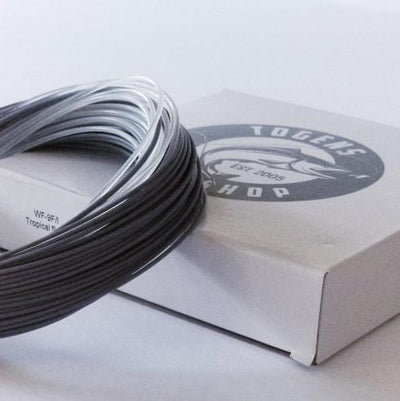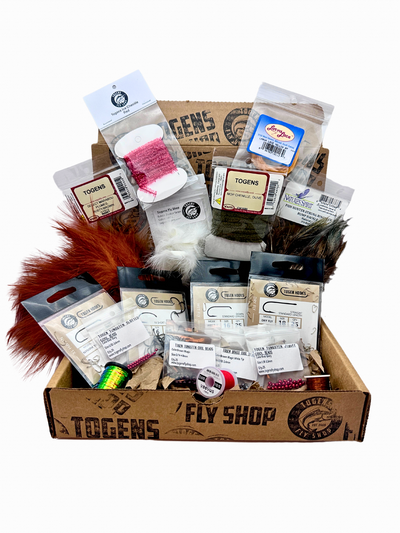7 Essential Fly Tying Materials
7 Essential Fly Tying Materials
Dubbing, 70 denier, squirrel tail, hackle feathers – the world of fly tying is chalk-full of tying material lingo which often perplexes and overwhelms people wanting to get into the hobby. We want to fix that problem right here, right now by explaining 7 essential tying materials that you will absolutely help you get on the vice and spinning thread in short time.
Tying Thread
Using tying thread is straight forward. Essentially, tying thread is wrapped around a hook shank using a bobbin to tie in fly tying materials. Using a bobbin, you can put pressure on the thread while wrapping to make materials secure and to produce a proportionate, well-formed fly. Selecting fly-tying thread may seem complicated with so many variations and colors. When deciding on thread, here are a few considerations to keep in mind:
Thread Color
Thread color is often dictated by the recipe of the fly that you are tying. However, you can’t go wrong by purchasing black, since this color will be used most frequently. As you expand in your fly tying it becomes worthwhile to have thread in multiple colors, but colors that are commonly found in nature (i.e. olive, brown, white and tan) are an excellent starting point.
Thread Size
Thread comes in an array of sizes, so a good approach for someone who is just getting into tying is to buy a variety of sizes that are well suited for different types of flies. Thread size is often labeled in aughts - a traditional measurement of the diameter of silk (from a time when silk was the primary material used for tying) that counts zeros, with a higher number of zeros indicating a finer thread.
For example, eight aught is indicated as 8/0 and is a suitable size for tying dry flies. For nymphs and wet flies, 6/0 is a good size to have handy. For larger flies, (think large streamers) a 3/0 thread is ideal. So, choosing the right size is really about what flies you will be tying and having an assortment will expand the opportunities to learn new and exciting patterns!
Thread Material
Thread material is another item worth mentioning. Today, there are many different thread materials with different breaking strengths. I generally find the polyester or nylon denier threads to be sufficient for most purposes.
One of the newer players to arrive on the thread market is gel spun polyethylene (GSP). This thread has highly strong tensile strength which is great for tying applications where the strength is necessary (like spinning deer hair). This material is also more expensive than poly or nylon thread.
Hooks
Selecting a hook is equally and maybe even more important than thread choice as this will be the business-end of our fly. If we want to land that trophy trout or smallmouth bass, we better be using quality, laser-sharp hooks.
Hook Size & Application
The hook is a critical component to tying flies that appear realistic enough to fool your quarry. If the selected size is not appropriate, it is highly likely the fish you are pursuing will flat out will reject it. For purposes of tying, I recommend the following sizes for the following application:
- Size 12 & 14 dry fly hooks – Begin using these hooks to tie an Adams or an Elk Hair Caddis in these larger, easier to tie sizes.
- Size 10 & 12 wet fly hooks and nymph hooks – Start tying highly effective, but simple patterns like the Pat’s Rubber Legs and Prince Nymph.
- Size 6 streamer hooks – Begin with this size to tie simple, but tried and true patterns like the Wooly Bugger or Muddler Minnow.
Once you’ve selected a hook, simply place the bent part of the hook shank between the jaws of your fly tying vice and tighten the vice so that the hook sits secure. You’re now ready to begin tying in materials!
Barbed or Barbless
Certain fisheries have specific regulations that require anglers to use barbless hooks for trout. The barbless helps make releasing fish much easier for both the angler and the fish. Remember that you can always flatten the barb on a hook using pliers if necessary.
Dubbing
Dubbing is a fuzzy natural or synthetic material that is wrapped, or “dubbed” around tying thread (hence the name) and used to shape the body of a fly. I recommend purchasing dubbing in a variety of colors as you will use this material frequently.
To apply dubbing, simply take a small amount (emphasis on small) between your fingers and spin the dubbing on to the thread. Once evenly distributed on the thread, begin wrapping the hook shank to form the body or head of the fly.
Eyes & Bead Heads
Eyes and bead heads serve a number of important functions. They serve an aesthetic purpose and make a fly look more life-like, but they also give the tyer more control over a fly’s weight and sink rate. Choosing the correct weight is crucial, as a fly that is too heavy or light will be unbalanced and ineffective.
There are a number of options for eyes and bead heads. I recommend the following variety to begin your journey in fly tying:
- Hour glass eyes – Use these to add weight and a realistic head shape to streamer flies for trout and bass.
- Coneheads - A more aerodynamic shape will make the fly more castable and will provide weight to help the fly sink.
- Tungsten counter-sunk bead head – Tungsten is a heavier material and will get flies down faster than other types of beads. It’s also more expensive.
Wire
Wire is another essential tying material that is useful for controlling the weight of a fly. By winding wire around the hook, this material can be used to tie highly effective nymphing patterns, such as the zebra midge. I recommend having a range of wire from 0,4 mm to 0,8 mm in diameter, as this will be suitable to for tying flies of different weights.
Feathers & Hackle
Feathers are an essential fly tying material for many flies. From dry flies to baitfish patterns, having a variety of feathers and hackle is highly recommended. One of the best ways to get a variety of useful feathers is to purchase a pheasant skin, which provides a large volume of feathers of different shapes, sizes and colors.
Hackle is another essential material for many dry fly patterns and comes in two primary forms – saddle and cape feathers. If you are planning to tie a large quantity of a size 14 Adams, I recommend purchasing a hackle saddle, which has many hackle feathers in the same size. Otherwise, if you would like to use the material for different flies in a variety of size, the hackle cape is the way to go.
Similar to other tying materials, having hackle in a number of colors is beneficial for a new fly tyer. I recommend beginning with hackle in grizzly, brown and black.
Elk / Deer Hair
Both deer and elk have course, hollow hairs that “flare” when tied in. This property is what makes the material unique among tying materials as it can be flared or spun (spinning deer or elk hair is a more advanced technique) to achieve a desired look. While many types of deer and elk hair are available for purchase (based on where on the animal’s body the hair comes from or whether the animal was a yearling or cow, etc.), I recommend “cow elk” hair for the beginner fly tyer. The reason for this is that it includes hairs that range from fine to course and therefore is suitable for tying a variety of patterns.
Fly tying is an incredibly fun and rewarding hobby - there is nothing quite like catching fish on something you created. So hopefully now you have a good starting point for making the leap into the tying world and a basic understanding of how to use the most essential materials.


























